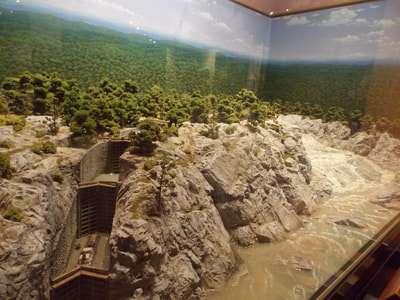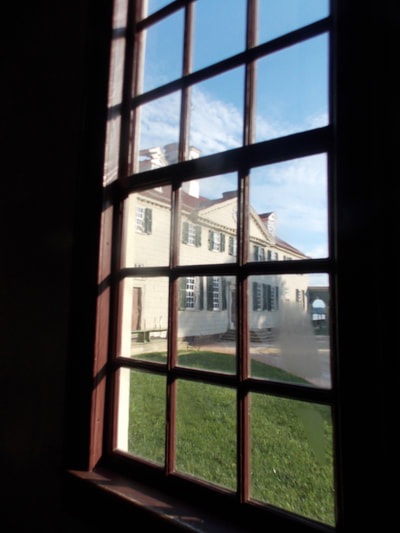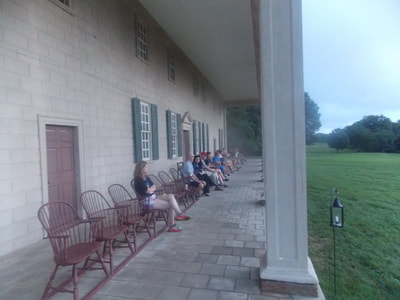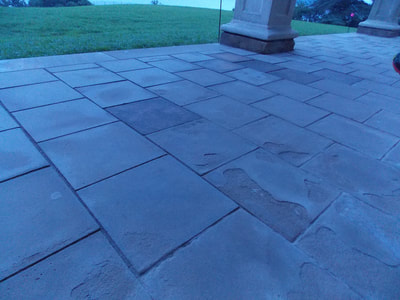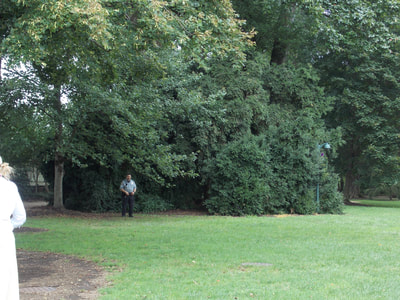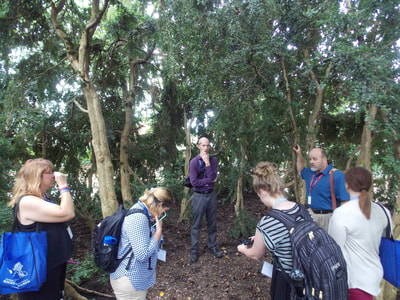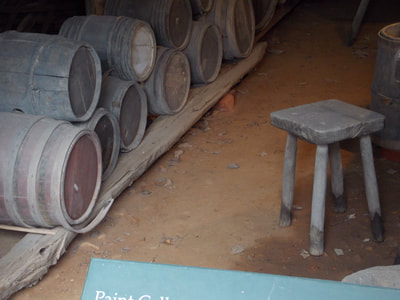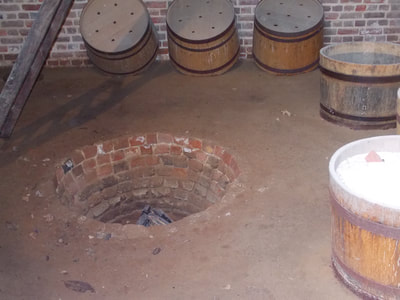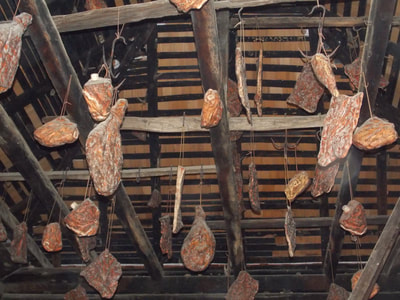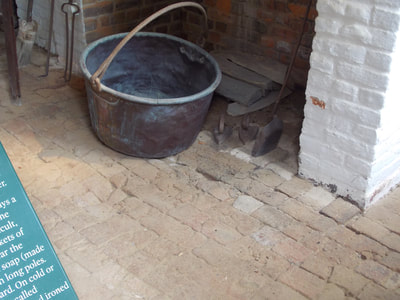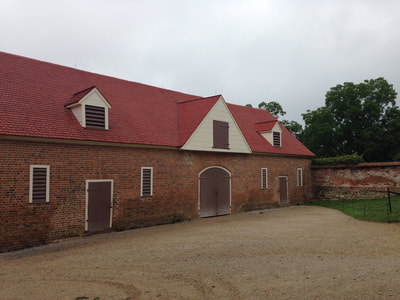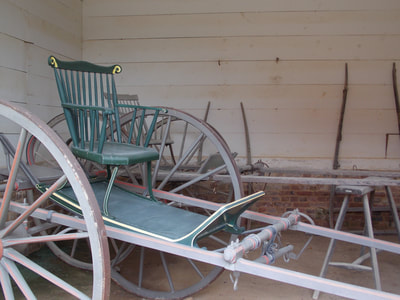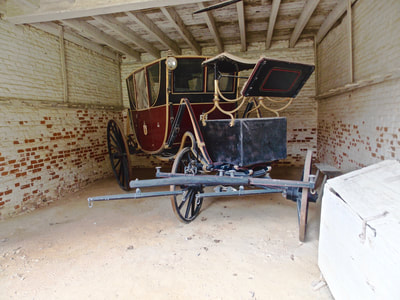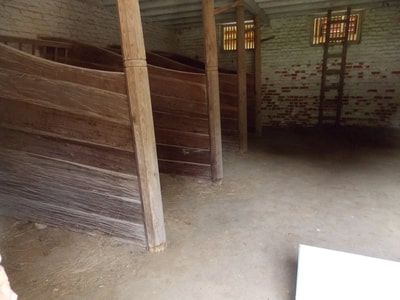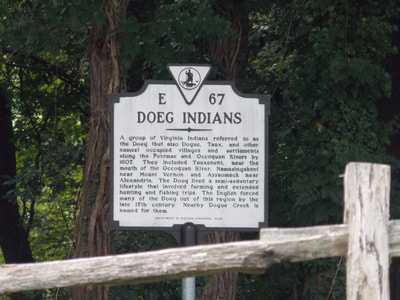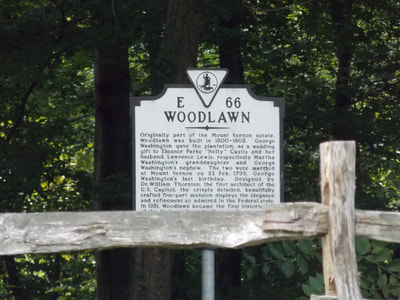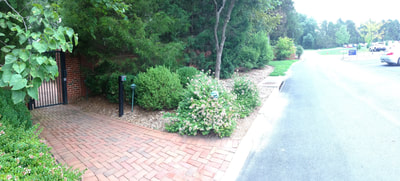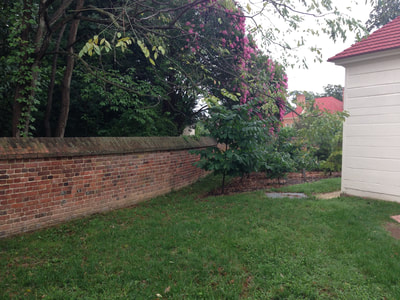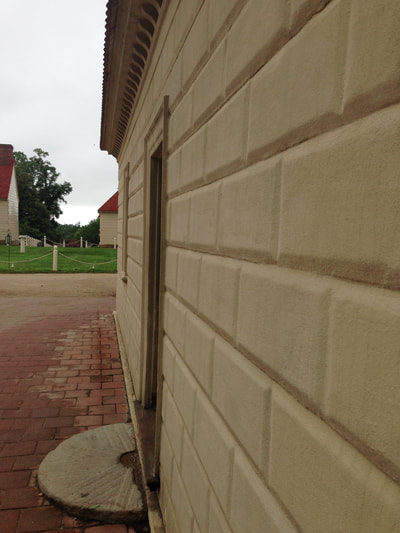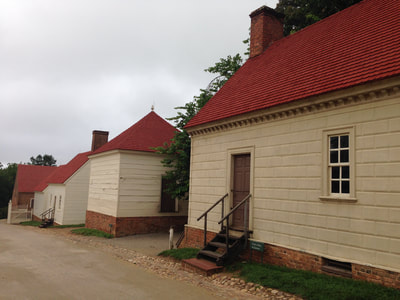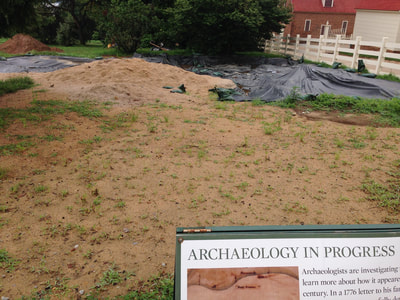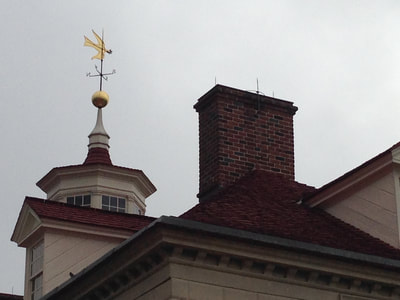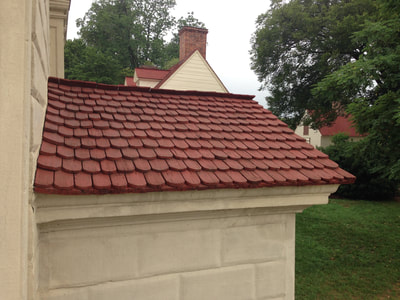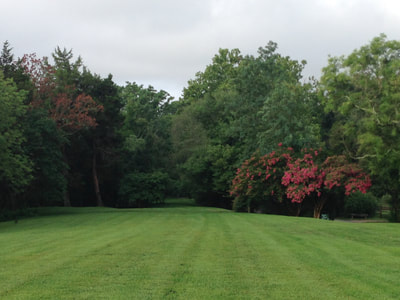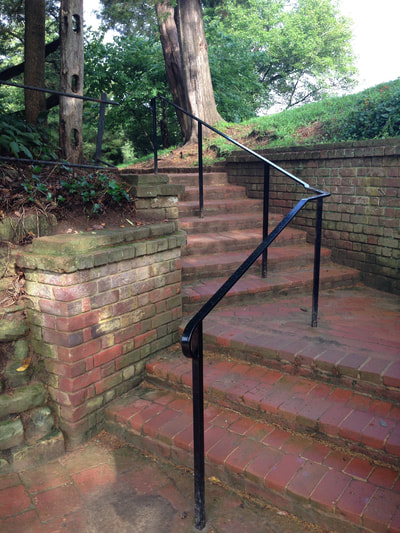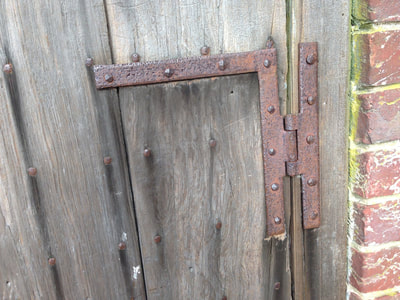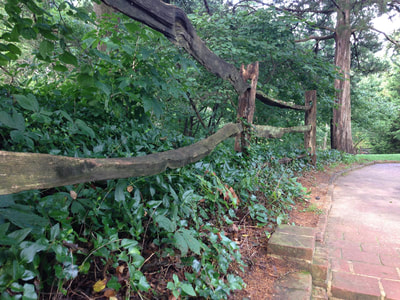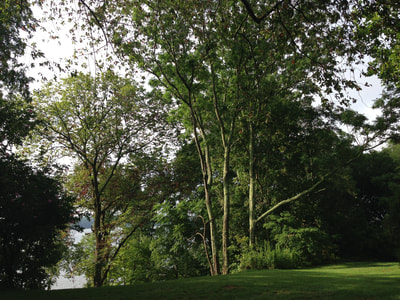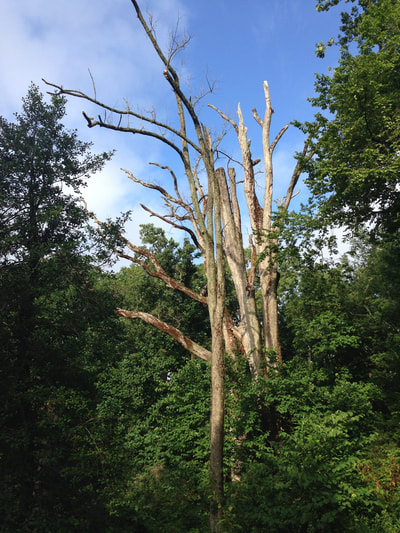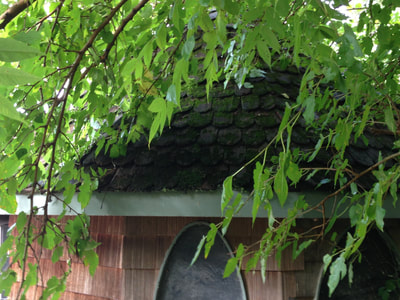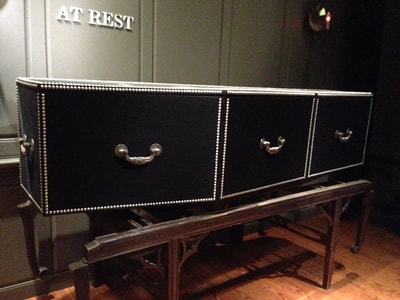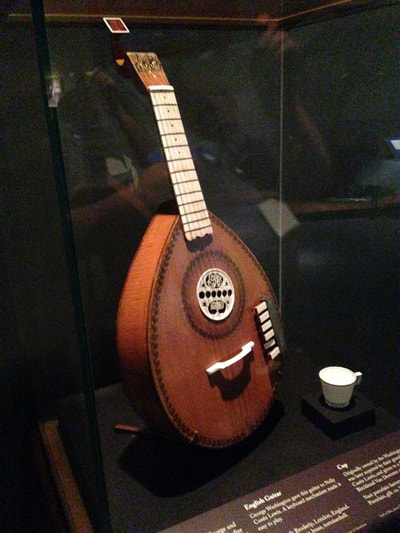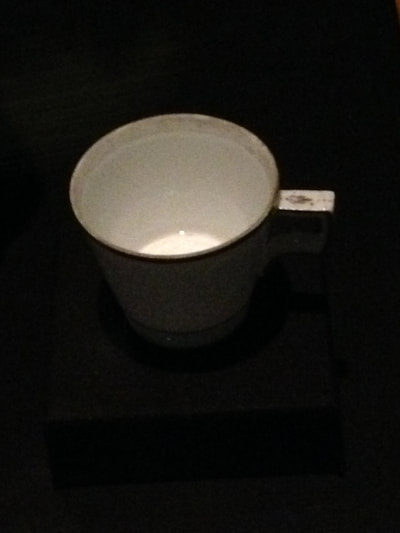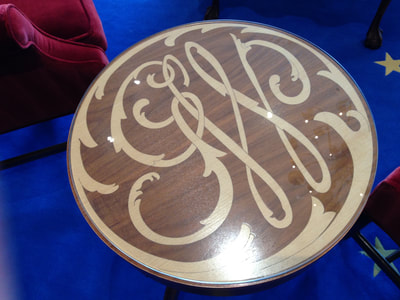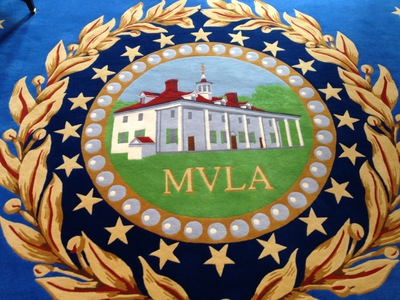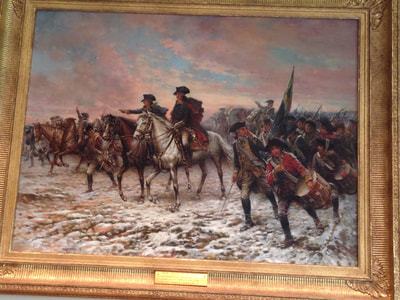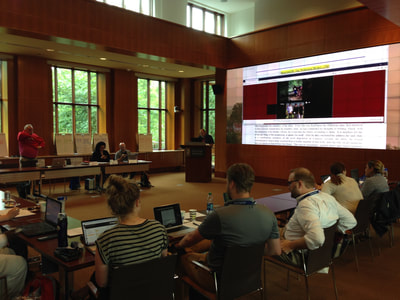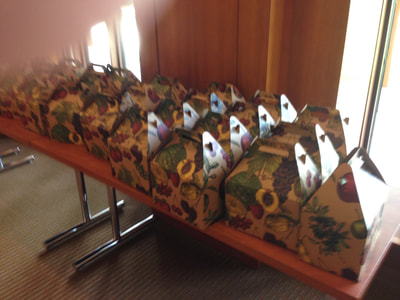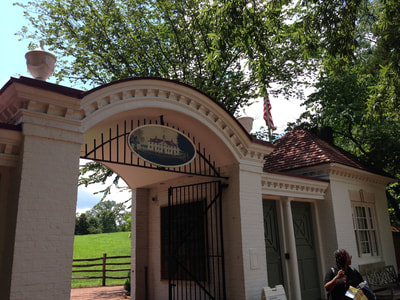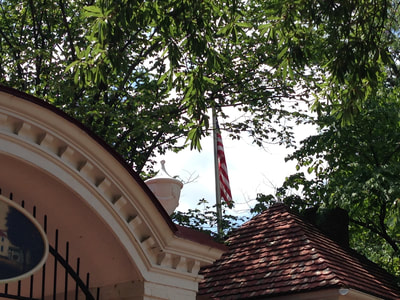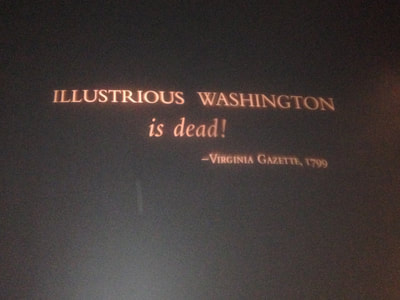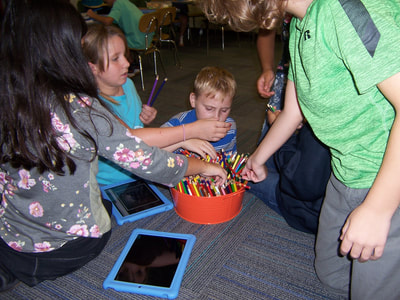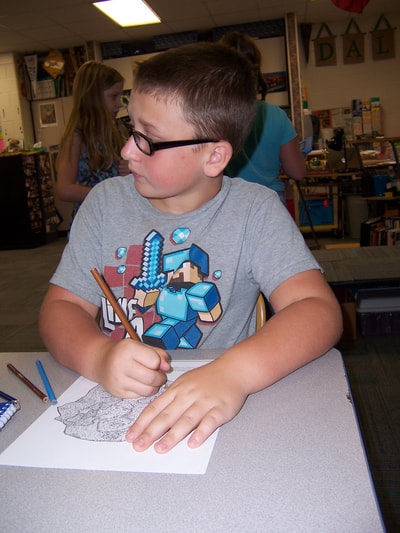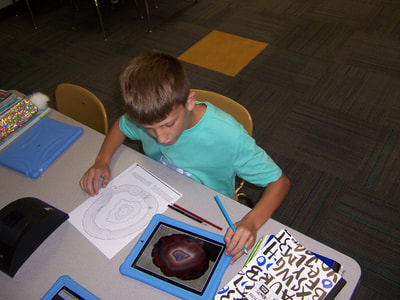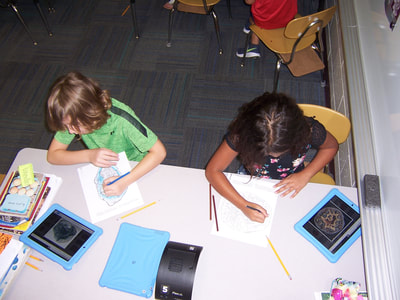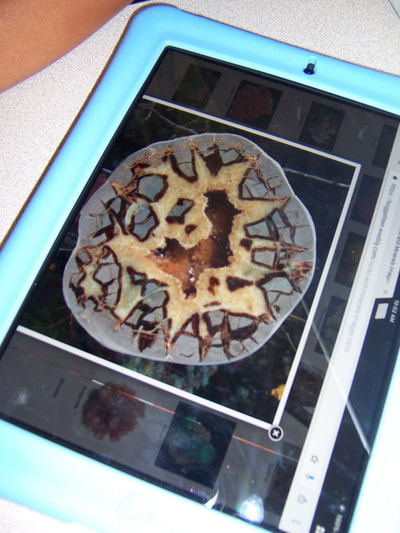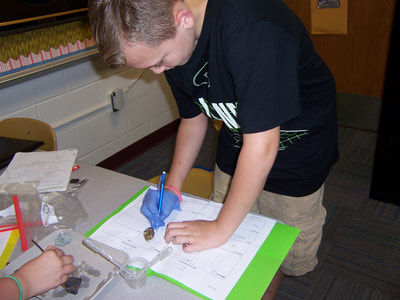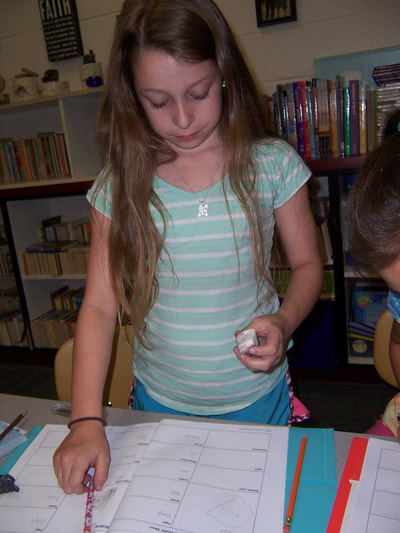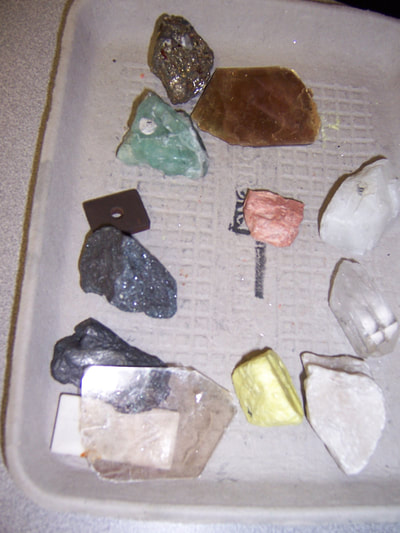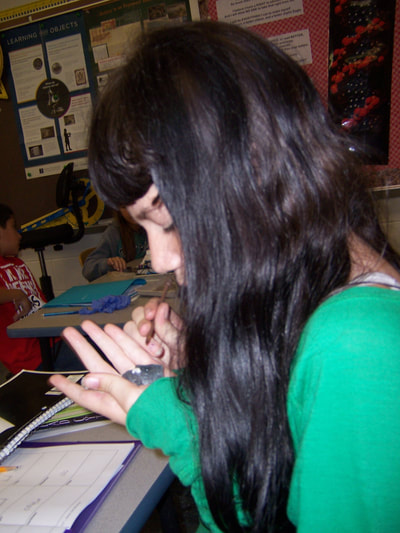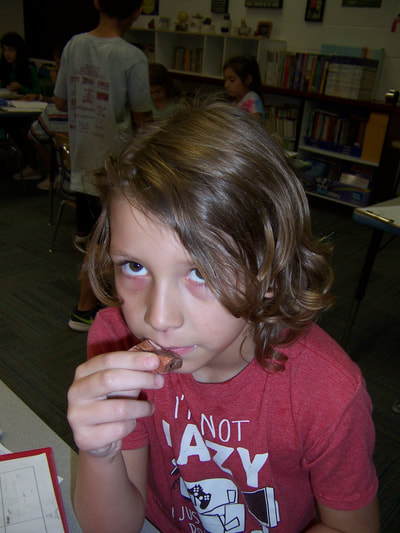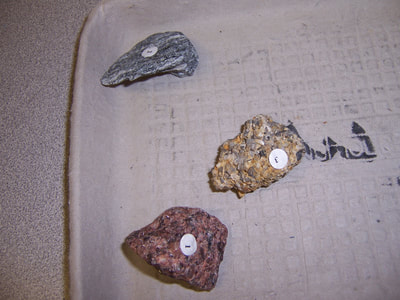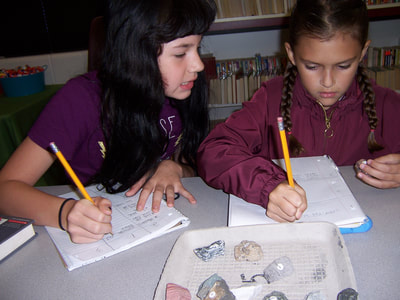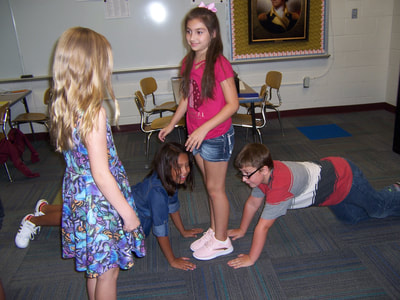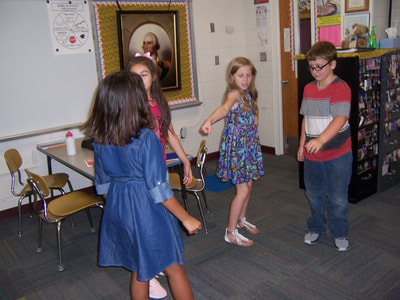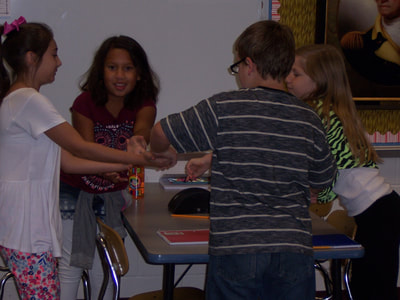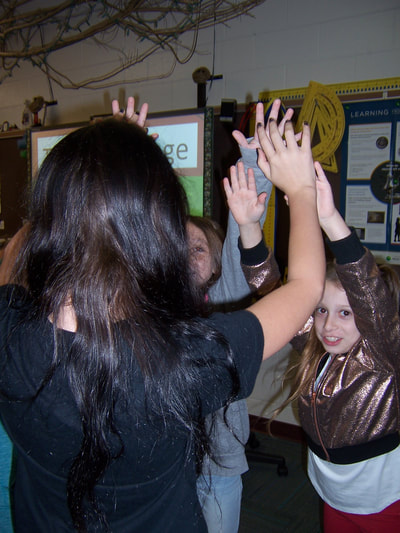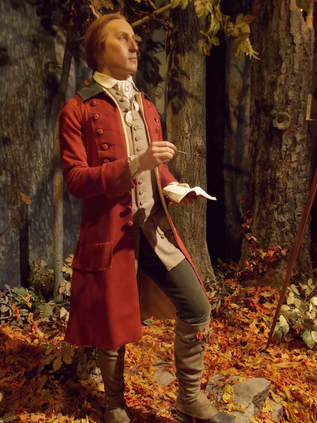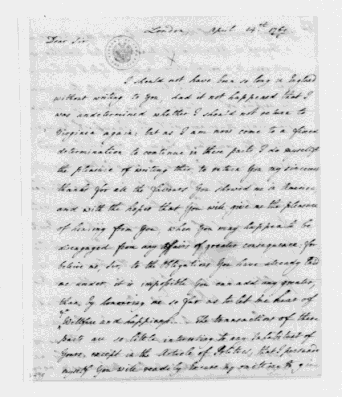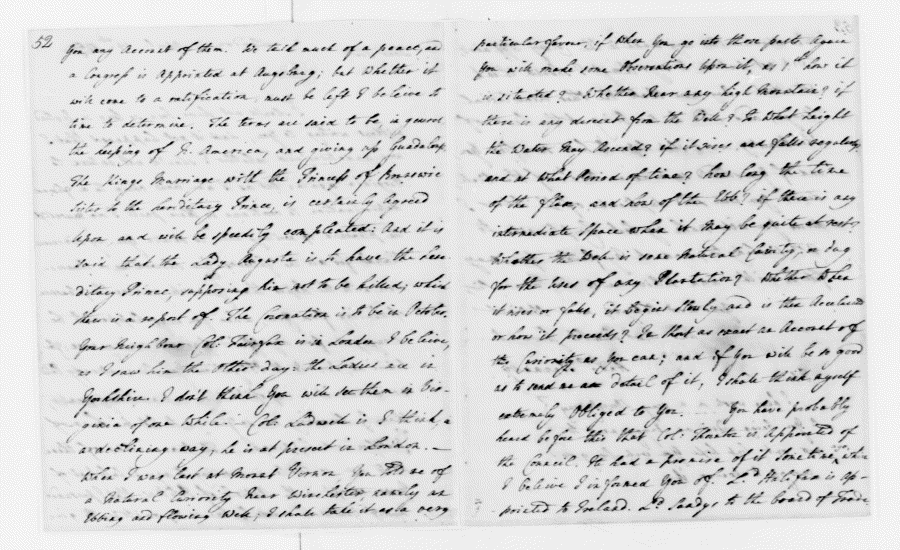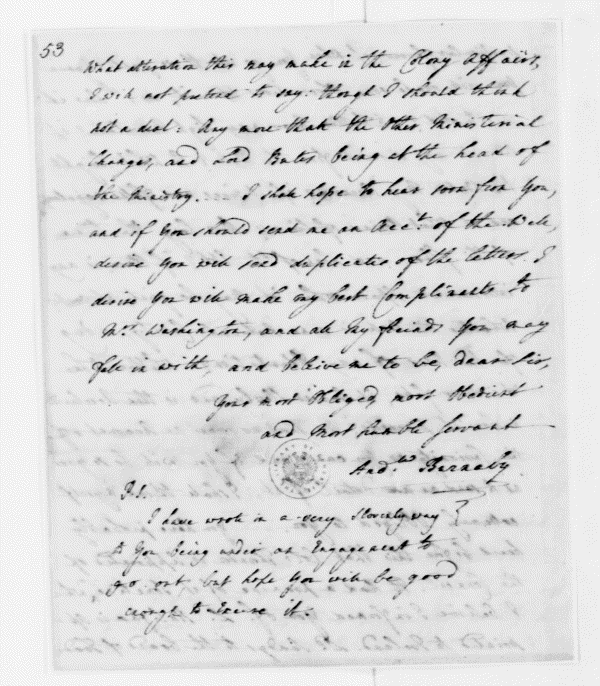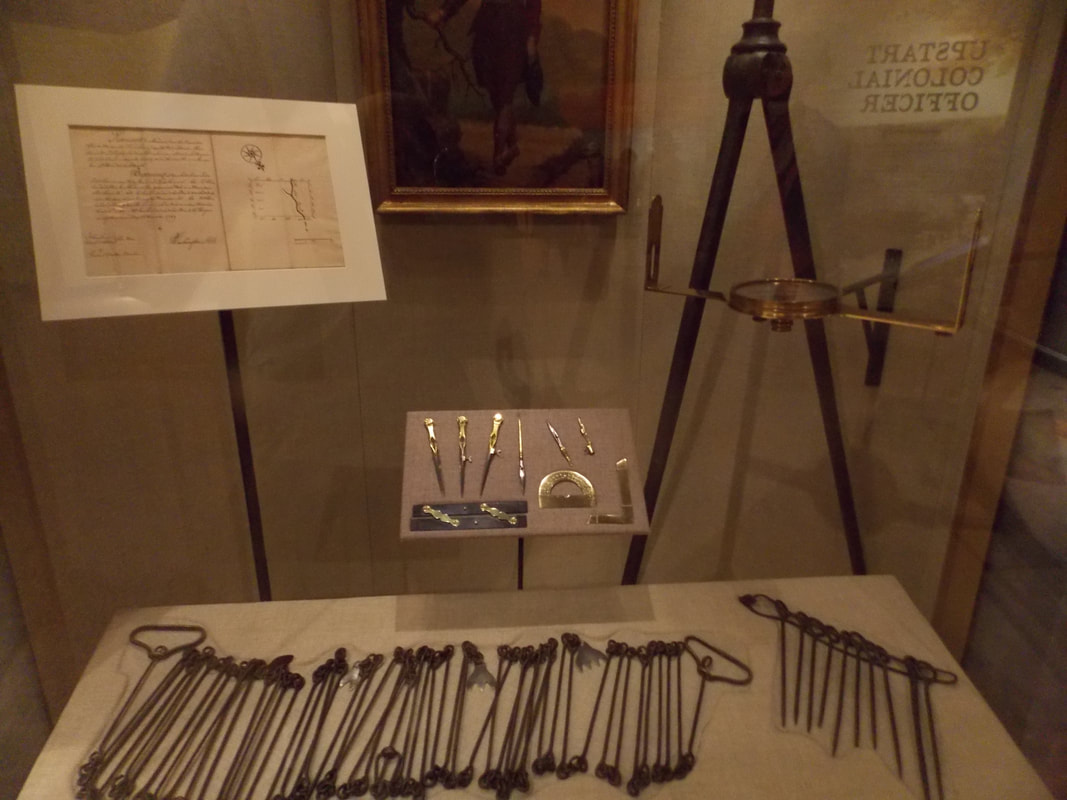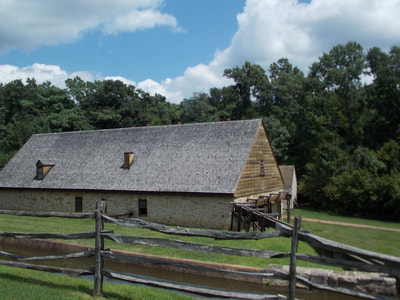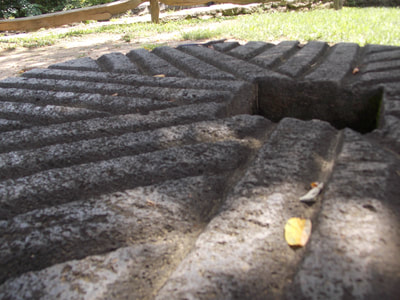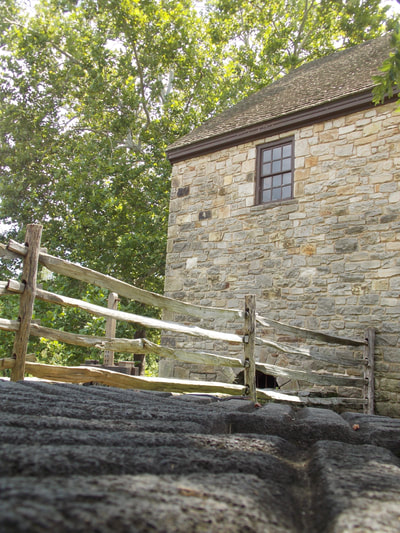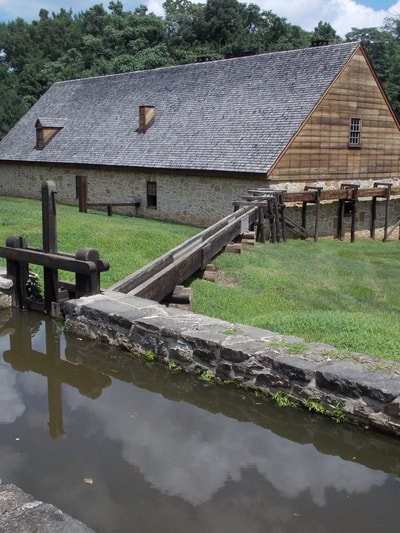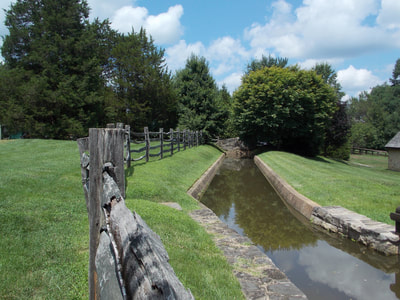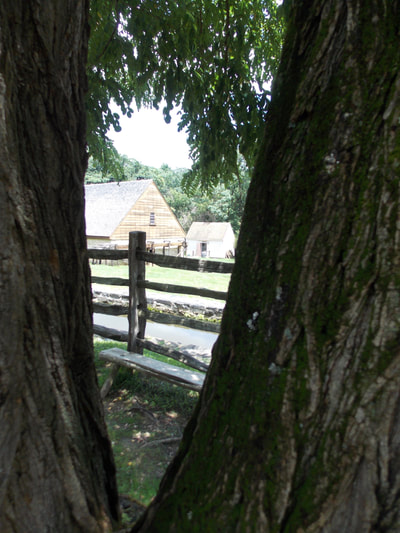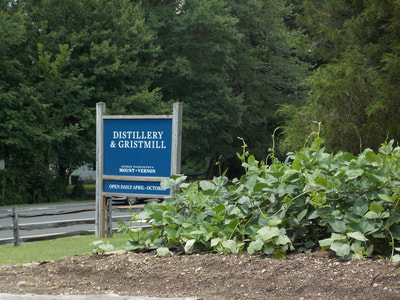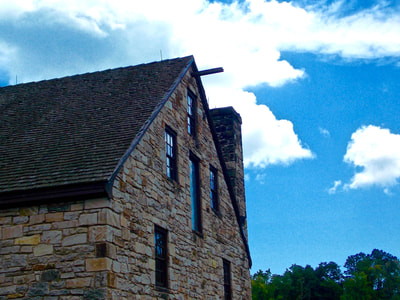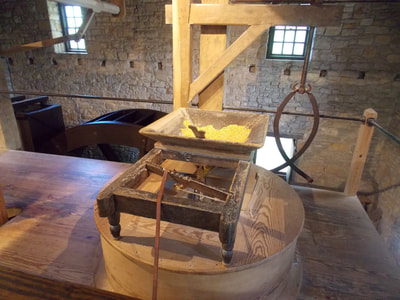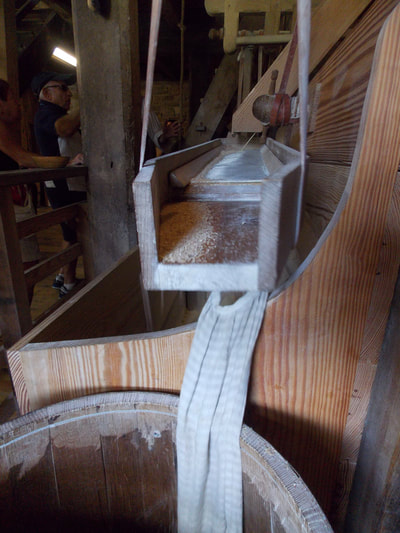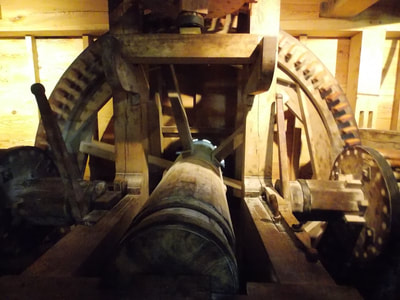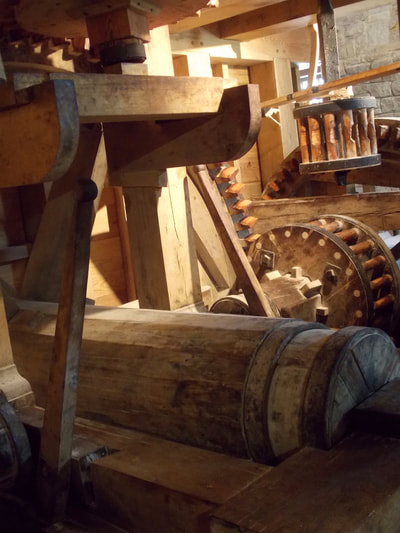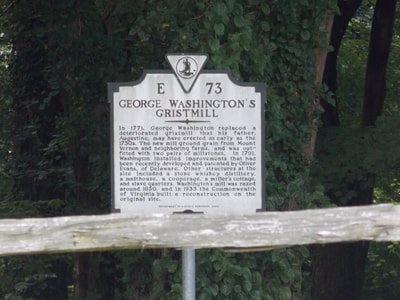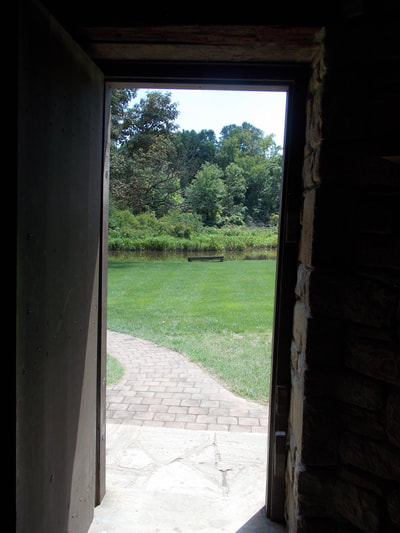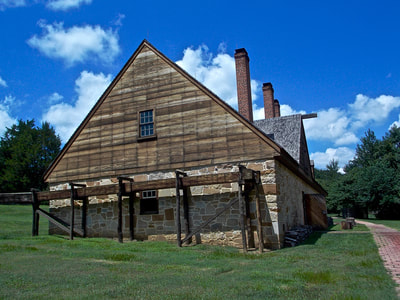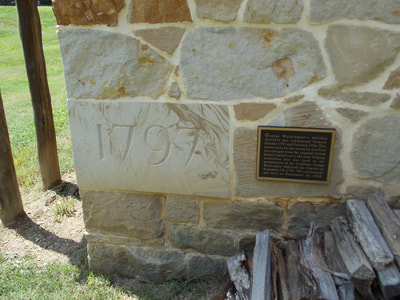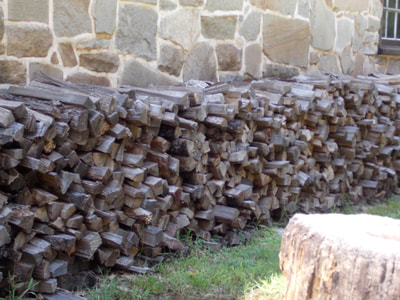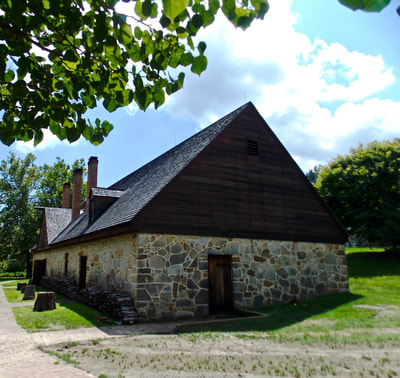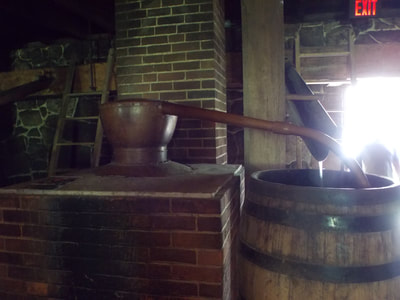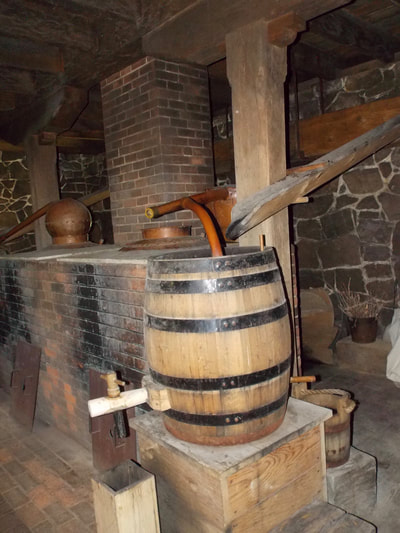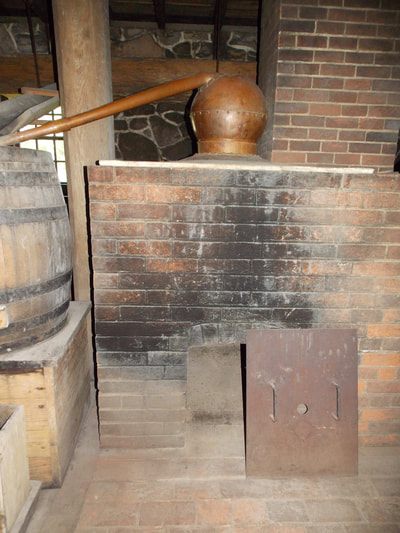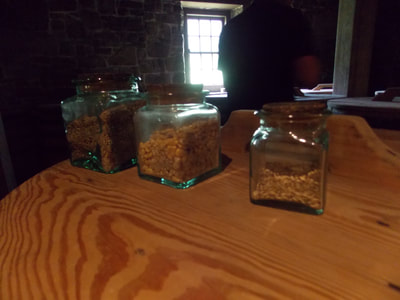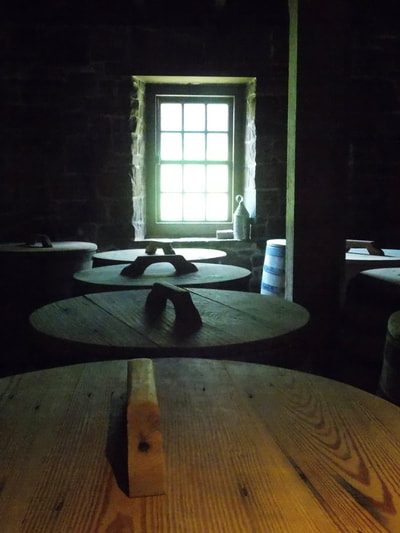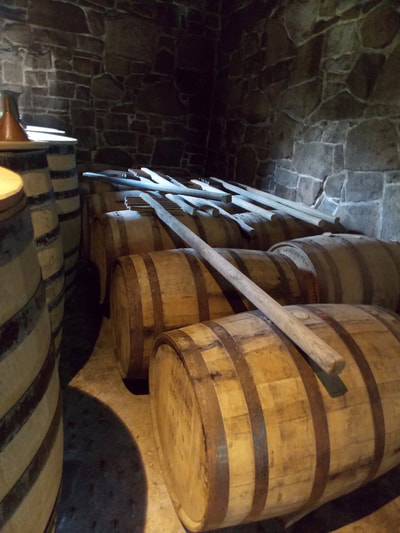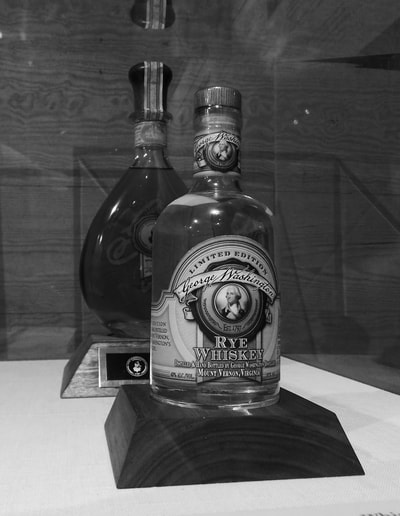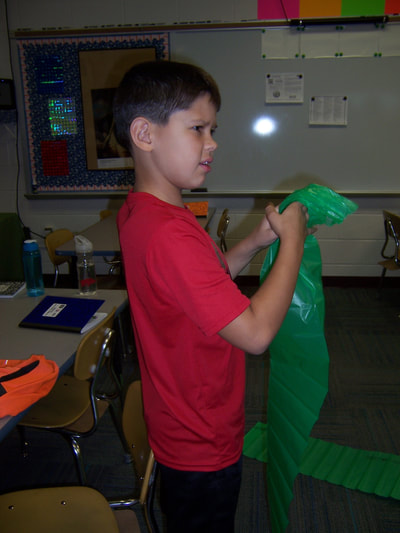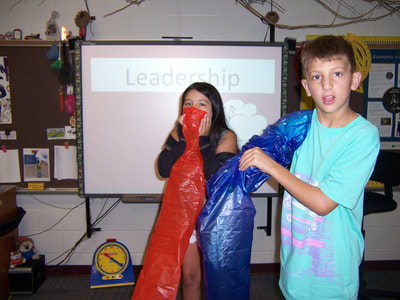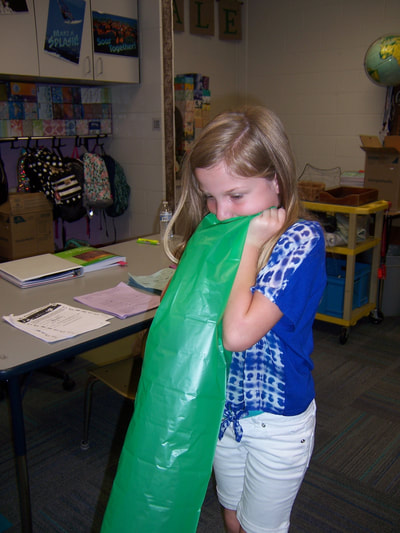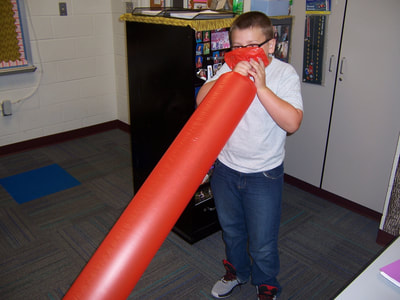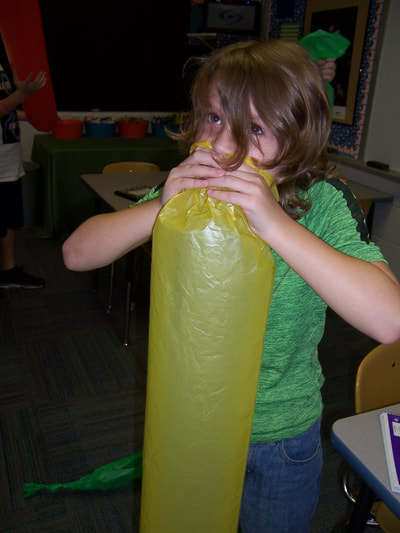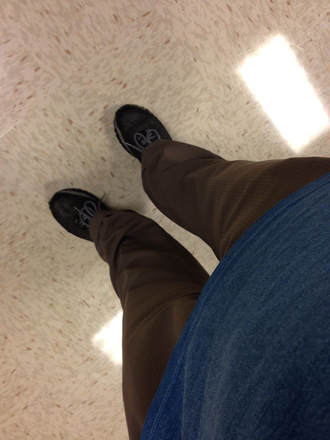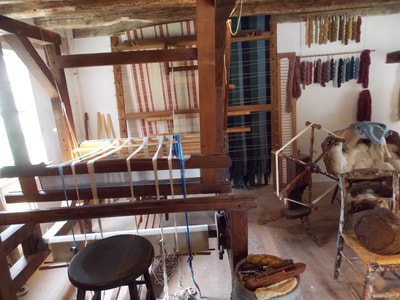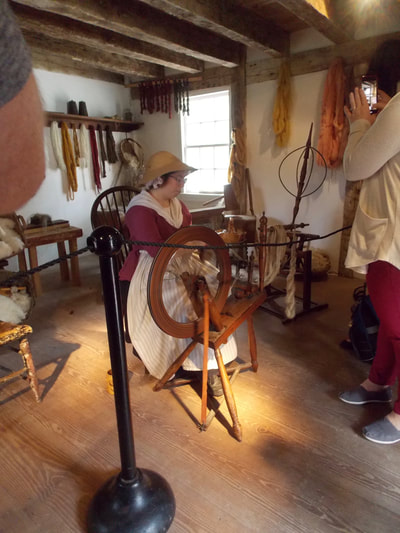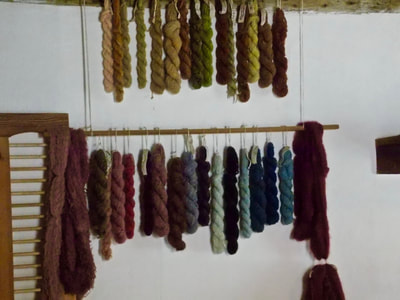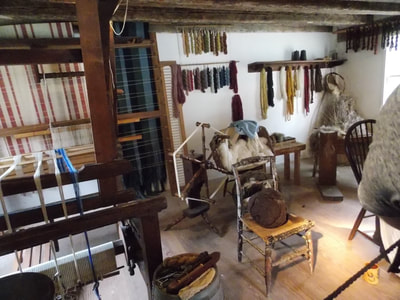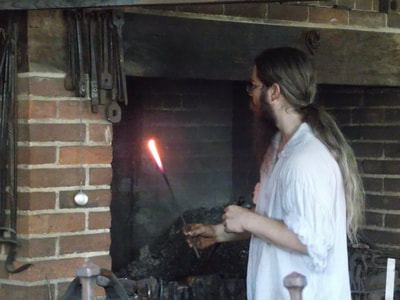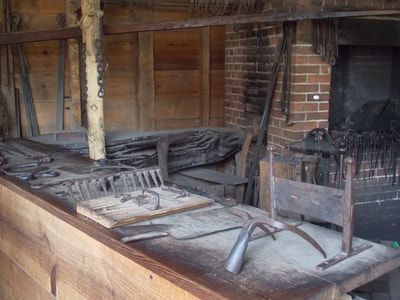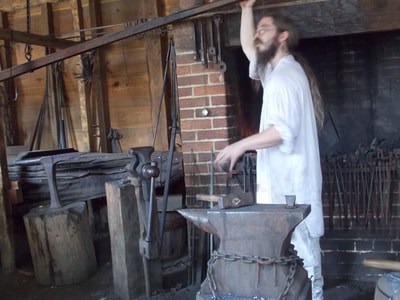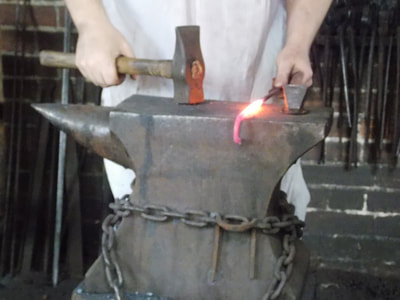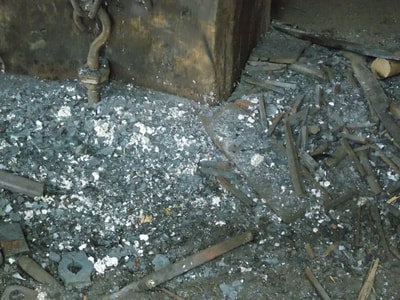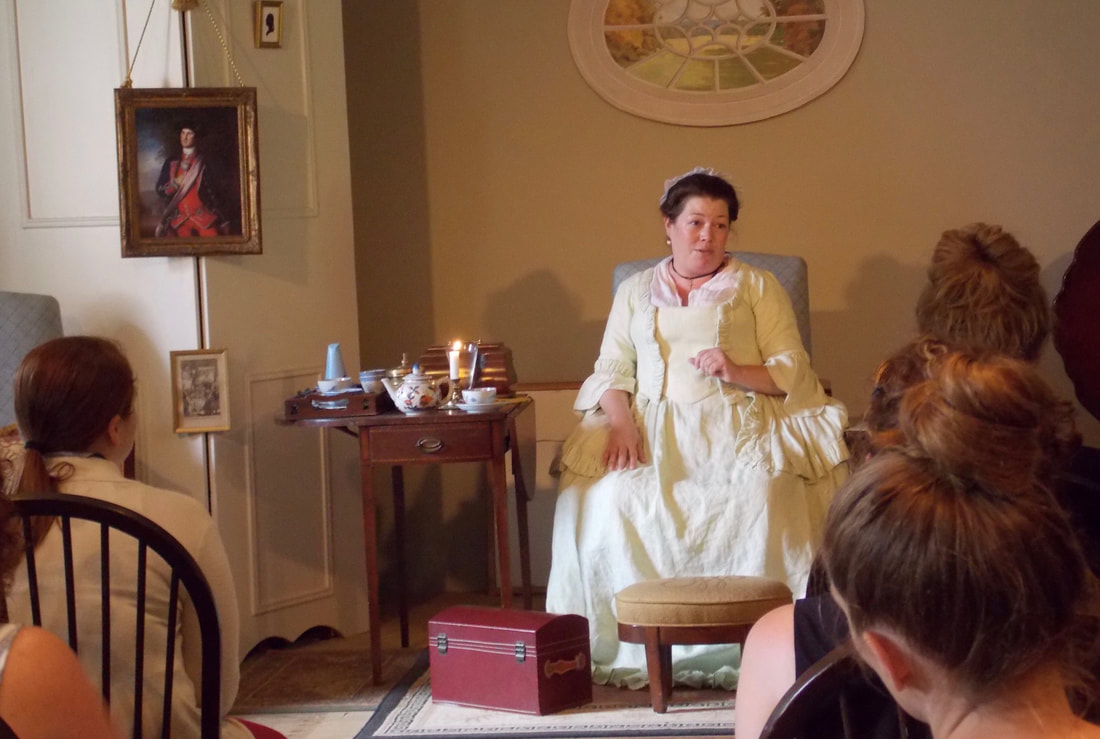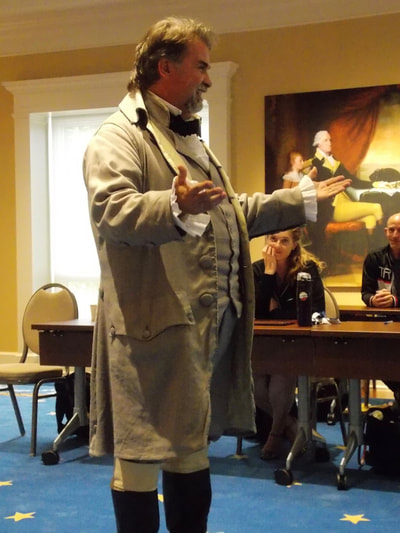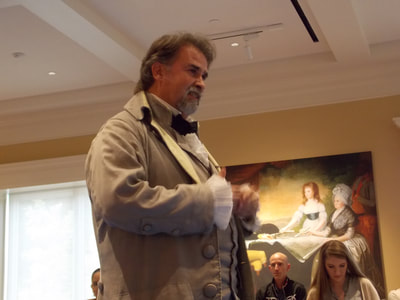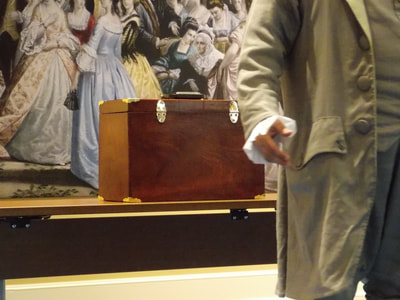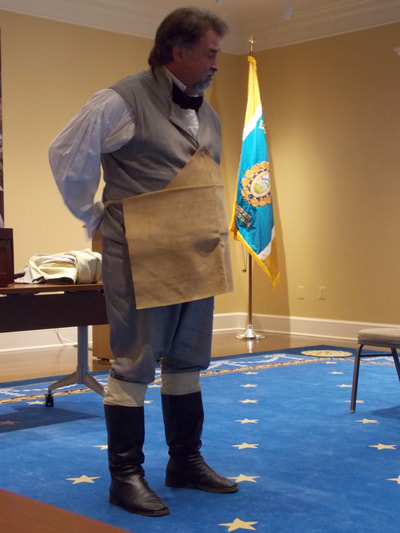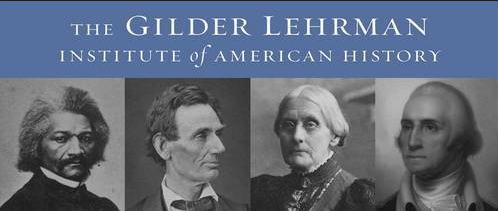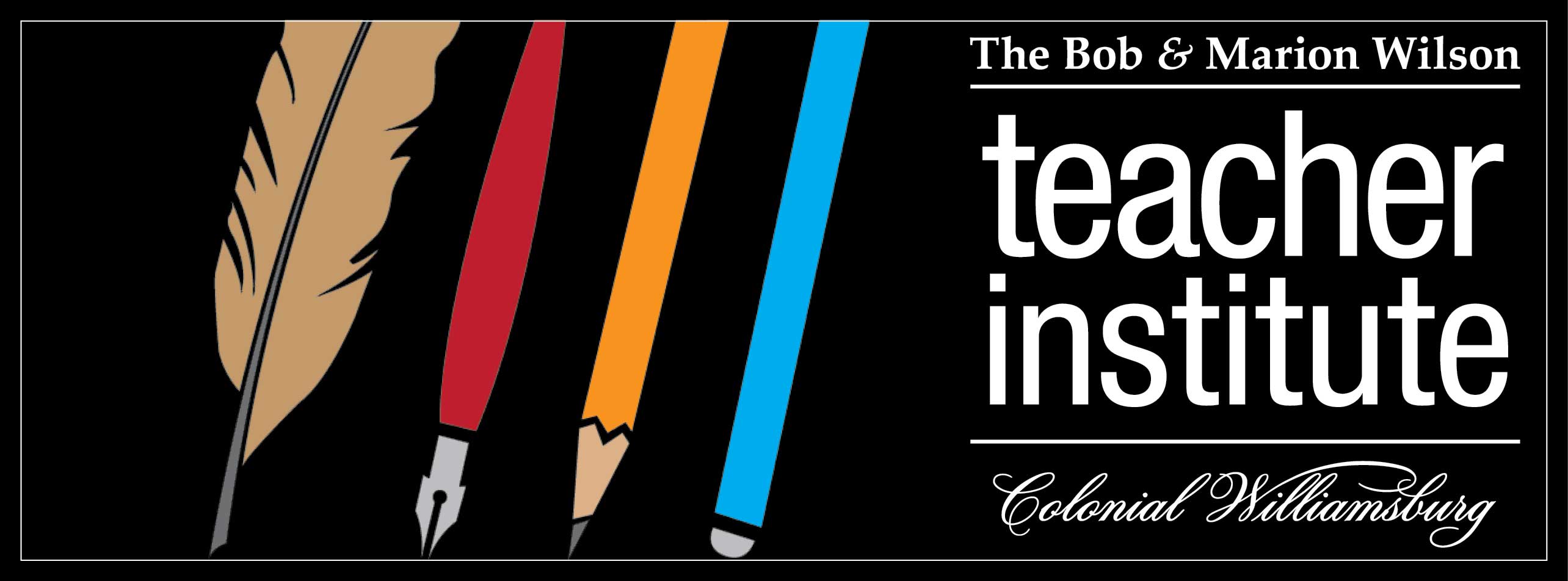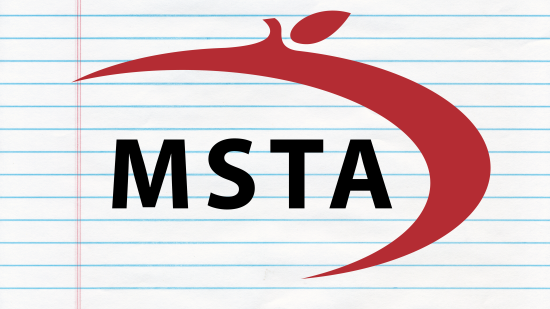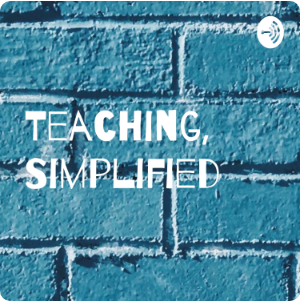|
I have these strange, panoramic photos that I took at Mount Vernon, last month. Some are more distorted than others, especially those of nearby objects. For example the second picture, below, is a shot of the piazza, which is decidedly straight in reality. The third picture is of Washington's library, which is decidedly round in real life.
0 Comments
In all, I took nearly 700 pictures during my stay on Mount Vernon. Rather than continue to bore people with more commentary, I'll caption one last odd collection of photos. As usual, you can click on each snapshot to get a better view. Before we did tests on the actual minerals, our class took some time to appreciate the beauty of minerals from around the world. Then we pulled out the real things - 12 minerals upon which we conducted tests to determine hardness, cleavage, color, streak color, texture, luster, smell, and light. Students used vocabulary such as translucent, transparent, and opaque. The room became a little loud with confusion, conversation, and engagement in this first real hands-on activity of the sort. Coming Soon: Hoggatt Cave
Within the last month, I've attended a graveside service for an eight-day-old baby, preached at a memorial service for an 88-year-old man, visited a 92-year-old woman fighting for her life at the hospital, and witnessed the wedding of a young cousin and his fiancé. It was my privilege to present myself at each of these events, whether to provide service of support for the families involved. Yesterday, it was also my pleasure to visit with students and teachers at Benton Elementary School in Neosho, Missouri. Benton is the site of last week's tragic accident that cost a kindergarten her life when she was struck by a car. The Joplin School District supported our neighbors in Neosho by providing lunch for the teachers and covering many of their extra duties on their first day back since Wednesday. Seven of our Cecil Floyd staff traveled to Benton, yesterday, in order to allow the teachers some time to eat together and relax. They could use their time in any way they wished, whether they chose to pray quietly in a corner, reminisce with their friends, or move forward with lesson planning. For my part, I spent the day outdoors, supervising and entertaining kindergarten through fourth grade students as they played at recess.
We're a couple of weeks into the school year, and I'm finally getting around to posting some photos of our first days. One of the most important part to starting the year, this year, was the inclusion of improvisation games. I chose a few of the games that focus on focus. I wanted to stress the idea that there are times to take attention and times to give attention to someone else.
(Liberty) Bell Work
Quick Write Think about your greatest personal strength. How would your life be different if you no longer had that strength?
Was George Washington the country's first cave vandal?
I suppose there is no way to know for sure, but there is evidence to imply that 16-year-old George was the one who "signed" the cave wall. On April 14, 1761, Andrew Burnaby wrote to the future general and president, requesting information about the cave. A scan of his letter is below. George responded, answering his questions about the cave. The transcript of his letter can be found at Founder's Online. Is this enough evidence to convince you that George Washington is the person who signed the cave wall (See the signature in question in the video, below right.)? It does make you wonder if there are any famous signatures in Hoggatt Cave. Perhaps with some exploration we will discover some important historical markings. I wonder what other scientific oddities we will find while spelunking.
When one is farming large acreages of wheat, as well as other grains like corn, one may choose, as Washington did, to build a mill. About three miles from the mansion house, visitors can visit the grist mill in its original location. With the distillery just across the property, the mill sits right on the highway. In a former life, I conducted tours through a much smaller grist mill in El Reno, Oklahoma, so the process wasn't so magical to me, but this rebuilt mill, using 18th century design, was quite primitive to me. All of the wooden cogs, gears, and belts, in fact, harken to medieval times.
In the same area, just below the mill, is Washington's distillery (rebuilt). At one time, George Washington was probably the largest whiskey producer on the continent, one of the largest in the world. I do not drink - never have - but the science involved is still interesting. I can't pretend to understand how someone created this process or what made them think of it. Of course, I was more interested in the slick little cornerstone on the reconstructed building, sporting the large date of 1797 (second photo below). According to the plate beside it, this stone was salvaged from the original United States Capitol and is the same Virginia sandstone from which the original distillery was constructed. Products from the grist mill and distillery are available in the Mount Vernon gift shops, including bags of corn meal and bottles of whiskey and brandy.
In the beginning days of class, I like to do several things:
There are probably other things to add to this list, but that at least gets us started. In the first days of school, I asked everyone to think about whether they consider themselves more as followers or as leaders. The class was split, with a few standing firmly and comfortably on the follower side of things.
We used the windbags (pictured) to illustrate the difference between a good leader and an ineffective leader. Students huffed and puffed to try to blow up these long tubes, but failed miserably. Of course, that was the point. First, I had not given them any specific instructions for easily inflating the tubes, and second, there is a scientific principle of which each of them was unaware (It's all about Bernoulli, but that's for another time.). All of the blowing and light-headedness in the world is only minimally successful at this point. And yet, the teacher can inflate the tube in a single breath. Obviously, the tube is larger than the capacity of my own lungs, so how is this possible? Just like an effective leader, I had to step back from the situation and not just dive right in. With the windbags, that means I need to stay six or eight inches back, away from the opening. In this way, my single breath attracts the air around it which then follows my breath into the bag. Again, this is akin to good leadership; instead of jumping right in and doing all of the work myself, I need to develop the skills to bring people, willingly, along with me. For a positive leader, this means less work and a more effective team. The windbags help us establish a working relationship in which all work toward a single goal. I'll gladly take some time out at the beginning of the year to get that ball rolling in the right direction!  It is with sadness that I write this message. Our former principal, Ms. McCombs is now the principal at Benton Elementary in Neosho, Missouri. Yesterday, at dismissal time, one of her teachers was struck by a car and killed. We can only imagine the feelings that are permeating through Ms. McCombs, her staff, her students, and the parents. This was a kid's teacher, a teacher's friend, a person's daughter, and so much more. People, probably children, witnessed the event. As I write this I do not know the teacher's name, nor do I know the teacher at all, but I still mourn with those who shared the teacher's life and space. The event occurred at dismissal time, perhaps in a crosswalk or in the pickup line at Benton. Perhaps it was a slip of a foot from a brake, but perhaps it was an impatient driver. I have to think that the driver is also experiencing hard times as a result. Accidents do happen, and whether it was avoidable or not is probably irrelevant to the guilty feelings of this driver. I do not ever want to know what that feels like, but I can certainly empathize. As I wrote yesterday about working in the pickup line at the end of the school day, I slightly recognized the dangers of that duty. Though I focused on extreme weather, we all need to take extra care when we around pedestrians, teachers, and children who are loading into cars. Parents, please be patient as we try to cross lines of traffic with students in tow. We do so to protect students from the vehicles. When I step in front of a car it is so the driver can see me, and not miss the much smaller child that is also crossing. I do not ever send a child in front of a car without first standing there. That is also why we want students to walk all the way to the end of the sidewalk - so the adults can load them safely and they will not cross unexpectedly. Keep in mind that we are watching for foul play as well as cars moving, and kids who might dart out without us. I hope we can also count on parents to be extra vigilant in our pickup situation. Please do not get into a rush. We will get kids into cars as quickly as possible, but we will also sacrifice speed for safety. Drivers, there are two lanes in our drive for the purpose of picking students up at the end of the day; please do not take it upon yourself to make a third lane down the middle or around the side just because there may be room for an extra car. Remember, students and teachers are walking through the cars and neither may notice that you have done so. We want to avoid any sort of accident that can happen in our own school, but we also don't want to forget that an accident already happened in Neosho. The big N above says Prayers for Neosho. Many have indicated such in social media by placing that big N on their status. How ever a person may express your concern, through religion or otherwise, we are a community that cares for another community that hurts. The principal calls me a weirdo. The other teachers think I'm strange. I have a unique duty at Cecil Floyd. This duty comes at the end of the school day, when I play the part of the Speed Bump at the end of the pickup line out front. I stand between the two lanes of vehicles and guide students safely to their cars. The purpose of the Speed Bump is to keep traffic from trying to subvert the line and drive down the center while students are crossing and loading. Knowing that the adults are more easily seen than the kids, we step in front of cars before allowing students to cross. Some parents make the effort to thank me, every day. Some recognize that this is a safety issue. Some recognize that, like the postal carrier, we are out there in rain, sleet, and snow - every day. I've come out of this duty soaked to the skin. I've been confronted by wind, heat, rain, snow, and varying combinations of these. Somehow I enjoy the extreme days. Fighting an umbrella through needles of water, splashing through puddles to safely load our children into their warm cars invigorates me.
Then I remembered the paddle boats. Earlier, people had rented paddleboats for fishing in the larger part of the lake. Through the storm, I counted the boats at the dock to discover that we were two short. One was easily located on the shore line, but the other was harder to locate. At the far end of the lake, I barely made out the boat, half sunk at the far end of the lake against the earthen dam. This was bad - about the worst thing that could happen. The boat had been blown to the south side of the lake, and a man and a woman were sitting on the sharp incline of the dam.
I couldn't stand in the building at the top of the hill, knowing these people were fighting for their lives being bruised by balls of ice. I prayed that all the people had made it to the muddy shoreline anyway. How many were on the paddleboat to begin with? I sprung into action (I was much younger and lighter in the 80s.). In a back room I found a surplus olive green military jacket, threw it around myself, and told the people in the admission building I where I was headed. Without any other protection, I plunged into the rain, barely noticing the hail, still the size of golf balls, that bulleted my head. I made my way through flooding creek beds and swampy reeds until I finally reached one end of the dam. Water swept over a low spill way built into that location. I crossed the rushing water forgetting that such a current could easily sweep me to my death - a rescue attempt gone bad. Once across the "river", I now faced a six-foot tall barbed fence with the strands too close and too tight to climb through (The fence was in place to keep the buffalo herd from crossing into a different area of the property.). To cross the fence, I removed the army coat (By now the hail was subsiding to the thick rain.) and threw it over the top strand of barbs. Climbing the fence with the coat in place, I didn’t have to worry about avoiding the barbs. Once on the other side, I recovered the coat and climbed the muddy incline to the top of the dam. I didn’t think those people would be able to go back down the slick mud or cross the rapids I had just faced, let alone climb the fence as I just had, so I made the decision to take the “long way home”, opting instead to go forward across the dam and into the other pasture. We still had to cross another fence and ended up sliding in even more mud along the rail bed that had been prepared for a train the property owners had purchased. This turned out to be a real pain as we slid along the treacherous route, finally coming through the gate into the barn area. I'm still impressed that I was able to spring into action so decisively. I probably couldn't do it today without ending my life at some point along the way. But I still remember that cold, wet afternoon, with hail bombs raining on me as I saved a man and woman from what could have been tragedy for them, as well. I got them off of that dam, onto higher ground, and to safety...just in time for the sun to break through the clouds. I guess that's what I remember when someone thinks I'm doing something special by standing in the gale-force winds of the school parking lot. That's the battle I recall when someone thanks me for braving the curtains of winter rainfall, when the freezing rain soaks into my socks, and when my hands feel like an elephant is standing on them because of the cold. Perhaps I picture myself reuniting children with their families during even more extreme conditions. Suddenly I am a first responder - serving my community with pride, integrity, and guts. I am a hero! Somehow, I enjoy the rush that comes in those situations. No, I'm not facing down an EF5 tornado or some kind of sweeping tsunami, and no, we're not evacuating because of raging wildfires, but I'm happy to be out there nevertheless. While others may moan about that duty taking too long...while others may think it is a thankless job...while others despise having to stand in the middle of the street while the rest of the staff stands inside a heated cafeteria, I kind of get a little thrill from the change of pace. Maybe I am a weirdo for enjoying the hardships of dismissal duty in the school parking lot. While that may be true, I think l will wear that badge with pride. What must one do when the war he leads causes an interruption in the availability of goods and services? Thankfully, Washington, with his collection of enslaved people and his wealth, had the ability to produce his own materials. At the Teachers Institute, we had a moment to observe a couple of the demonstrations in process - wool spinning and blacksmithing.
Young Martha Washington is a character interpreted at Mount Vernon. She causes a deal of confusion, this one, as she is from a specific time period from before the Revolutionary War. In other words, this Martha knows nothing of Washington's leadership as a Patriot general. She doesn't know anything about his presidency or his death. That means that, not only must she know her character, the recipes she recorded, and when her neighbors might visit, but she must also deflect questions about her future.
Dr. James Craik met George Washington during the French and Indian War. The man who plays the doctor at Mount Vernon interprets the character with great precision. In fact, he is the director of the interpretive characters there. He told our teacher group (out of character) that every person who interprets a character must study documents in the library for 40 hours a week for at least a month before being allowed on property with a costume. The art of interpreting a character involves much more than memorizing a script, and it is more than delivering lines on stage. The individuals who are featured on the plantation are fully familiar with the real persons they portray. I was impressed with their ability to conjure facts and notions out of their memories when asked specific and poignant questions from their audience. Dr. Craik is a unique figure. To play the role, one must understand not only the doctor's background, but also those of the people he encountered. Dr. Craik must know George Washington's experiences in the French and Indian War, Washington's rise in military rank, his ability to lead, and the events in the interim of the wars, as well as the events of Washington's courtship of the widow Martha Custis, and of course 18th century medical practices. The task of interpretation involves scholarship, rehearsal, improv without making stuff up, and recall. I have two videos to share below, but beware: some of the following content can be graphic in nature.
|
AnthemThe Hoggatteer Revolution
is an extensive, award-winning, inimitable, digital platform for Encouraging and Developing the Arts, Sciences, and honest Christianity in the beautiful, friendly LAND OF THE FREE AND THE HOME OF THE BRAVE This site is described as
"a fantastic site... chockablock full of interesting ideas, hilarious anecdotes, and useful resources." 
...to like, bookmark, pin,
tweet, and share about the site... and check in regularly for new material, posted often before DAWN'S EARLY LIGHT! History in ResidenceElementary Schools: Bring Mr. Hoggatt into your classroom for a week of engaging and rigorous history programming with your students. LEARN MORE BUILDING BETTER
|







